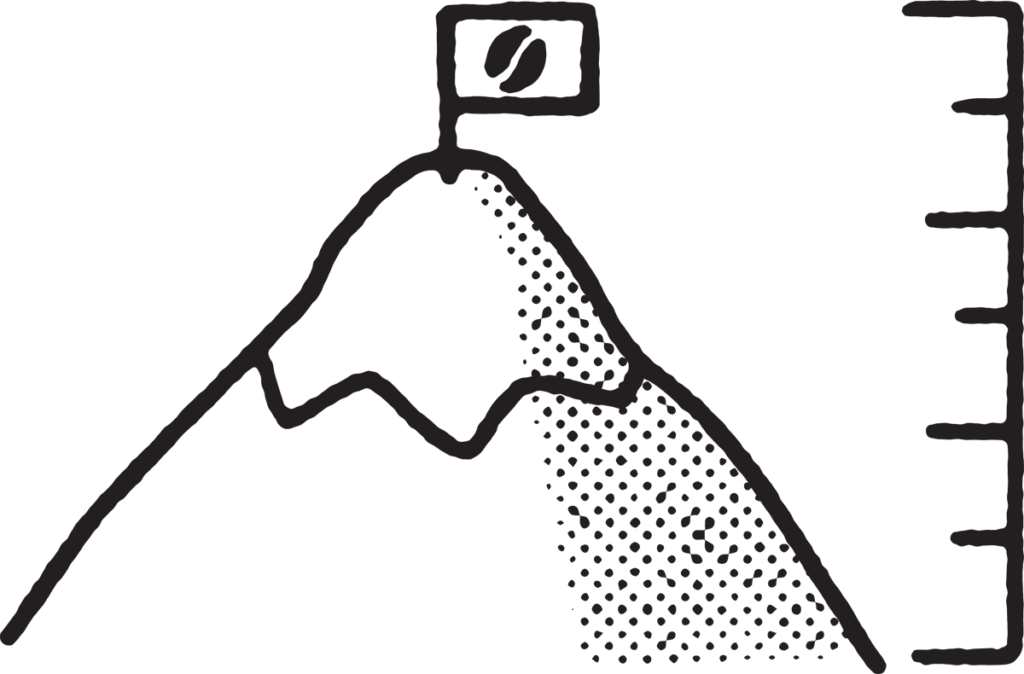
A measurement of a vertical distance between an object and global sea level. Often expressed in meters above sea level and used to describe where a coffee is grown.
Altitude or elevation can have a significant effect on the growing and taste of coffee. At higher elevations, the temperature is cooler, the air is thinner, and there is often more rainfall. These conditions can slow down the growth of the coffee plant, which can lead to a denser, harder bean with a higher concentration of sugars and acids. As a result, coffee grown at high elevations is often considered to be of higher quality and is typically more expensive.
Coffee grown at high elevations also tends to have a more complex flavour profile. The slower growth rate allows the coffee plant to develop a higher concentration of flavour compounds, which can result in a sweeter, more nuanced taste with a greater depth of flavour. Additionally, the cooler temperatures and higher rainfall can also lead to a lower acidity and a smoother taste.
Coffee grown at lower elevations tends to be more acidic, less complex and less sweet. This is because the beans are grown in warmer climates and mature more quickly, which leads to a more uniform and less dense bean.
Additionally, coffee plants grown in lower elevations are less prone to pests and diseases, which can make them easier to grow organically.
It is important to note that coffee grown at high elevations does not always mean it’s better than coffee grown at lower elevations. The coffee taste profile can also be affected by the coffee varieties, soil, weather conditions and farming practices.
Do you have a term or definition you’d like us to add to the glossary? Let us know using this form.


